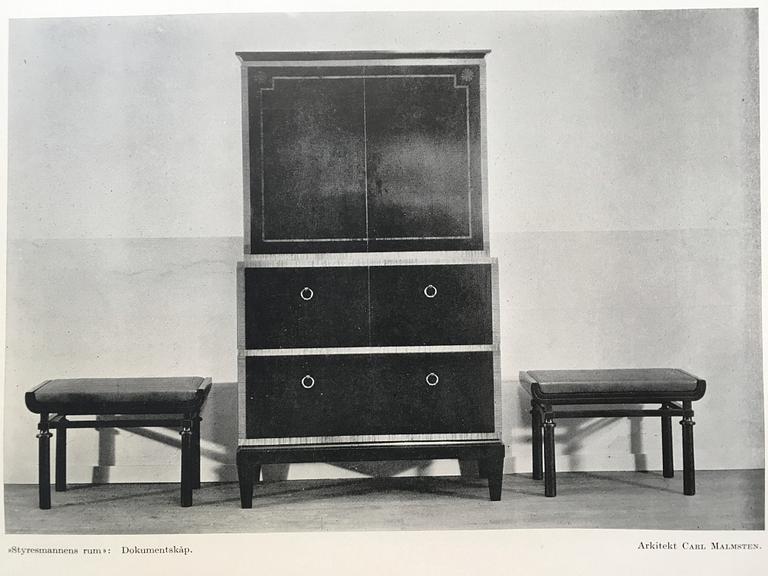Carl Malmsten
A CARL MALMSTEN Swedish Grace cabinet by Nordiska Kompaniet 1920's-30's.
Palisander and zebrano veneer with inlays, marked with NK labels NK R 1810 - C 24070 and NK Made in Sweden, height 180 cm, width 100 cm, depth 49 cm. Key included.
Wear. Avainet sisältyvät.
Näyttelyt
Probably Internationally exhibited during the years 1926-30 according to the labels.
Kirjallisuus
Boet: månadsskrift för hemkultur, hantverk och konstindustri, Boet, Göteborg, 1928, p 60.
Muut tiedot
According to the Malmsten Archives, designed in 1926 and exhibited 1928 at Liljevalchs in Stockholm.
Prospective purchasers are advised that several countries prohibit the importation of property containing materials from endangered species, including but not limited to coral, ivory, tortoiseshell and palisander.
Accordingly, prospective purchasers should familiarize themselves with relevant customs regulations prior to
bidding if they intend to import this lot into another country.
Suunnittelijat
Carl Malmsten is one of Sweden's most famous furniture designers. Many of his furniture are considered modern design classics, for example, the cane chair "Lilla Åland", the armchair "Farmor", the sofa "Samsas", the cabinet "Herrgården", and the furniture series "Vardag".
Both "Lilla Åland" and "Vardag" adopted the ideals of "beautiful everyday goods" of the 1940s. Their neat shape and frugal design quickly became timeless interior details that we still see in many homes today.
At the beginning of his career, Malmsten interned at various carpentry workshops and studied furniture at Nordiska museet and Skansen. He had his breakthrough in 1916 when he was commissioned to design part of the interior of Stockholm's City Hall.
During his career, Malmsten collaborated with several architects, such as Ragnar Östberg, Ivar Tengbom, and Ferdinand Boberg. He designed furniture for Stockholm's concert hall and Ulriksdal castle. He participated in the now iconic hosing exhibition at Liljevalchs gallery in 1917, where the term "Beautiful everyday goods" was coined.














































